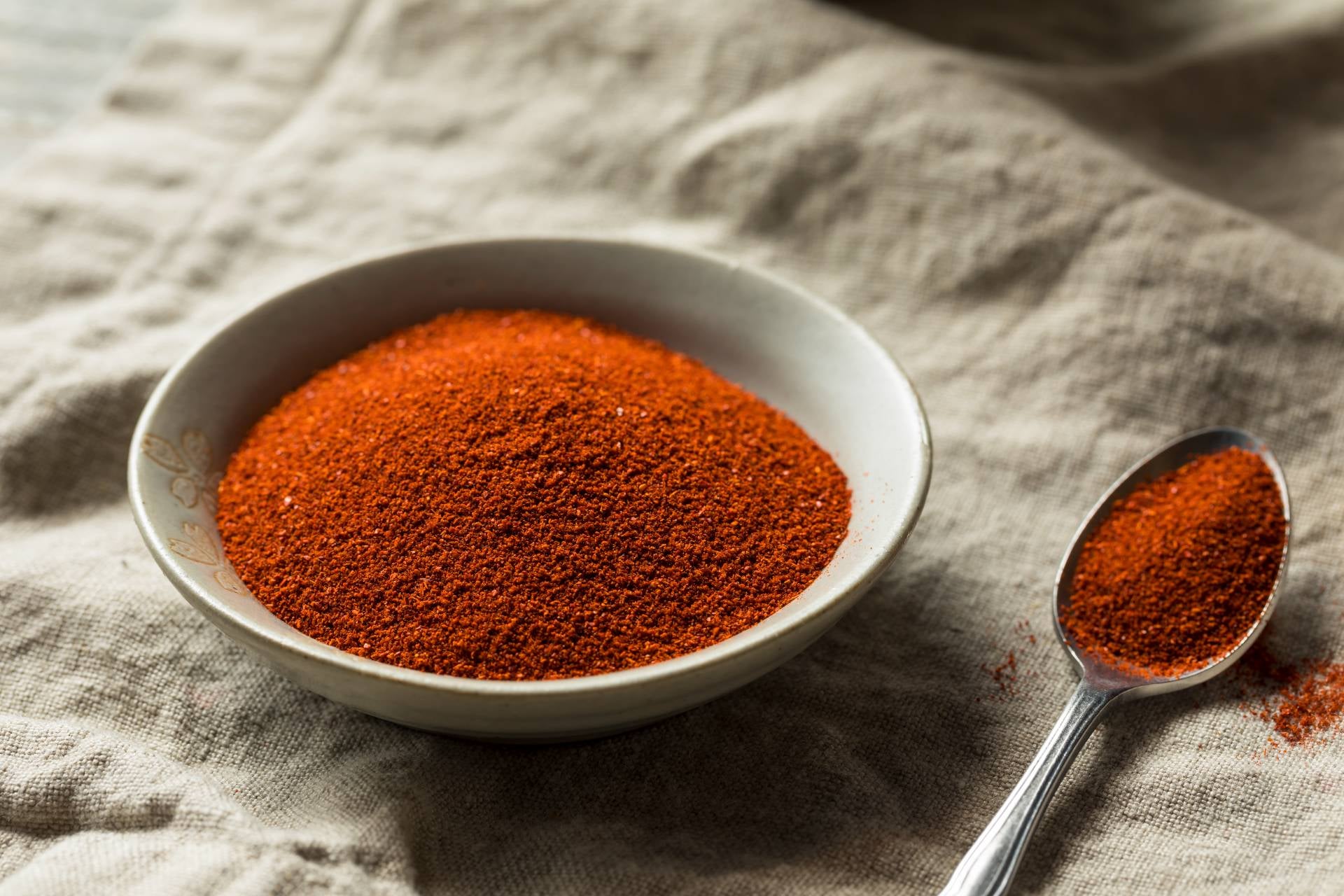Cayenne pepper
Cayenne is another spice made from ground pepper, and it has a similar red colour to paprika. It is far hotter than paprika, however, and you will only need about half, or even a third as much. Try adding a little honey or sugar to recreate the sweetness of paprika.
Chilli powder
Chilli powder is another pepper-based spice, with a similar fiery colour. Again, it is hotter than paprika, and the chilli is often mixed with other spices like cumin and garlic, so the flavour may differ more than you’d expect. Try adding a little tomato juice for an earthier, sweeter flavour.
Chilli flakes
Chilli flakes are not mixed with other spices, so they are a little closer to paprika in flavour, as well as being a reasonable colour match. They do have a different texture to paprika, however, and as with chilli powder, they tend to be spicier. Substitute 1 tsp of paprika for ⅓ tsp chilli flakes for a similar spice level.
Cajun spice
Cajun spice is a blend of many different herbs and spices, and often includes paprika, along with other seasonings such as garlic powder, salt, pepper, onion powder, cayenne, oregano and thyme.
Hot sauce
Hot sauce is made using chilli peppers, so will have a similar flavour to paprika, although it will not colour the food in the same way. Hot sauces come in different strengths, and can be far hotter than paprika. A milder Tabasco is a good match for hot paprika.
Chipotle powder
Chipotle is a moderately spicy chilli, with a smoky, sweet flavour, making it a good match for both sweet and smoky paprikas. It will still be a little spicier than a sweet paprika, but nothing too overpowering.
If you want to put your new paprika knowledge to use in the kitchen, try this delicious ktipiti recipe, a Greek dip made with salty feta cheese, charred red peppers and a pinch of that all-important paprika.
Paprika is so versatile and easy to use, why not use it to add another layer of flavour to simple recipes such as these bread croutons for salads and stuffing? It also makes the perfect foil to creamy fish dishes and is used in both its sweet and hot versions in this fisherman’s soup recipe created by chef Levente Koppány. Last but not least, these paprika-coated roast walnuts make a great snack and are ideal for adding extra flavour to salads and soups.













